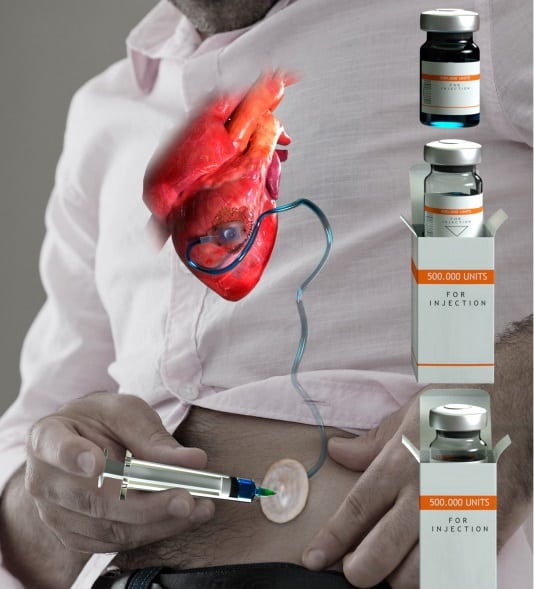
After a patient has a heart attack, residual scarring can lead to heart failure. Current therapies, such as drugs, proteins and stem cells, could treat scarring – but these treatments are often delivered systemically, rather than directly to the site of the damage, and can require multiple doses to work.
Hoping to halt the progression from heart attack to heart failure, researchers from the USA and Ireland have developed an implantable device that sits directly on the heart and delivers drugs and other therapies directly to damaged heart tissue (Nature Biomed. Eng. 2 416).
The device, dubbed Therepi, is a small patch that is sutured onto the heart. The patch contains a sponge-like biomaterial that acts as a reservoir, holding and releasing therapies through a semi-permeable membrane. The biomaterial is connected to a port or pump outside the body, where therapies can be injected by the patient or a healthcare professional.
The reservoir also provides a unique opportunity for administering stem cell therapies. Rather than pass through the membrane into the heart, the cells stay within the reservoir where they produce paracrine factors that promote healing in the damaged heart tissue.

“The material we used to construct the reservoir was crucial. We needed it to act like a sponge so it could retain the therapy exactly where you need it,” says co-first author William Whyte, a PhD candidate at Trinity College Dublin and AMBER. “That is difficult to accomplish since the heart is constantly squeezing and moving.”
The team performed a pre-clinical study in a rat model, using the device to administer multiple doses of stem cells to a damaged heart over a four-week period. Hearts that received multiple dosages of cells via Therepi had more cardiac function than those who received only a single injection or no treatment at all.
“After a heart attack we could use this device to deliver therapy to prevent a patient from getting heart failure,” explains co-first author Ellen Roche from MIT. “If the patient already has some degree of heart failure, we can use the device to attenuate the progression.”
Therepi addresses the problems with current drug delivery methods by administering localized, non-invasive therapies as many times as needed. The device’s reservoir can be implanted on the heart in just one surgical procedure. By optimizing the design and adjusting the materials used to construct the reservoir, Therepi could also be used to treat diseases and health problems in other parts of the body.



